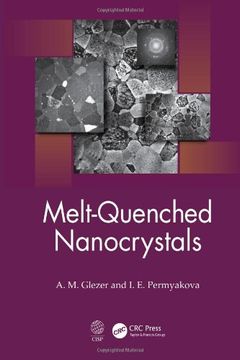Share
Melt-Quenched Nanocrystals
A. M. Glezer
(Author)
·
I. E. Permyakova
(Author)
·
CRC Press
· Hardcover
Melt-Quenched Nanocrystals - Glezer, A. M. ; Permyakova, I. E.
£ 153.00
£ 170.00
You save: £ 17.00
Choose the list to add your product or create one New List
✓ Product added successfully to the Wishlist.
Go to My WishlistsIt will be shipped from our warehouse between
Monday, June 03 and
Thursday, June 06.
You will receive it anywhere in United Kingdom between 1 and 3 business days after shipment.
Synopsis "Melt-Quenched Nanocrystals"
Melt quenching--the method of quenching from the liquid state--provides new opportunities for producing advanced materials with a unique combination of properties. In the process of melt quenching, attainment of critical cooling rates can produce specific structural states of the material. Nanocrystalline materials produced by melt quenching are classified as nanomaterials not only by their nanoscale structural elements but also by the effects these elements have on the properties of the material. The result of 30 years of research, Melt-Quenched Nanocrystals presents a detailed and systematic analysis of the nanostructured state formed in the process of melt quenching and subsequent thermal and deformation effects. It covers the metallurgical and mechanical properties of nanomaterials, focusing particularly on properties derived from nanocrystals and their agglomeration. The text introduces four different types of nanocrystals that can be produced by melt quenching, each having different structures and properties: Type I nanocrystals formed when crystallization takes place completely during melt quenching Type II nanocrystals formed when melt quenching is accompanied by amorphous state formation along with partial or complete crystallization Type III nanocrystals formed when melt quenching results in the formation of the amorphous state, and nanocrystals can be produced as a result of the subsequent thermal effect Type IV nanocrystals formed when melt quenching leads to the formation of the amorphous state, and nanocrystals can be produced as a result of the subsequent deformation effect The possible uses for these materials are extensive, with applications from coatings to biological compatibility. The final section of the book presents a discussion of existing and future applications of nanocrystals produced by different melt-quenc
- 0% (0)
- 0% (0)
- 0% (0)
- 0% (0)
- 0% (0)
All books in our catalog are Original.
The book is written in English.
The binding of this edition is Hardcover.
✓ Producto agregado correctamente al carro, Ir a Pagar.

